formerly eScholarship Editions


|
|
|
|
Your search for
'Cinema and Performance Arts' in subject
found 58 book(s). | Modify Search | Displaying 1 - 20 of 58 book(s) | |
| 1. | 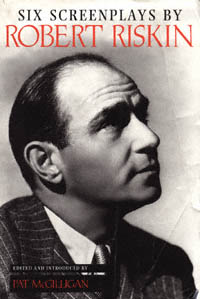 | Title: Six screenplays Author: Riskin, Robert Published: University of California Press, 1997 Subjects: Cinema and Performance Arts | Film Publisher's Description: Screenwriter Robert Riskin (1897-1955) was a towering figure even among the giants of Hollywood's Golden Age. Known for his unique blend of humor and romance, wisecracking and idealism, Riskin teamed with director Frank Capra to produce some of his most memorable films. Pat McGilligan has collected six of the best Riskin scripts: Platinum Blonde (1931), American Madness (1932), It Happened One Night (1934), Mr. Deeds Goes to Town (1936), Lost Horizon (1937), and Meet John Doe (1941). All of them were directed by Capra, and although Capra's work has been amply chronicled and celebrated, Riskin's share in the collaboration has been overlooked since his death. McGilligan provides the "backstory" for the forgotten half of the team, indispensable counterpoint to the director's self-mythologizing autobiography - and incidentally the missing link in any study of Capra's career.Riskin's own career, although interrupted by patriotic duty and cut short by personal tragedy, produced as consistent, entertaining, thoughtful, and enduring a body of work as any Hollywood writer's. Those who know and love these vintage films will treasure these scripts. McGilligan's introduction offers new information and insights for fans, scholars, and general readers. [brief] Similar Items |
| 2. | 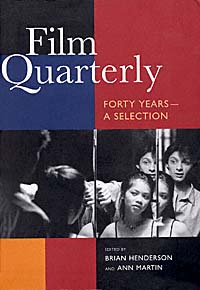 | Title: Film quarterly: forty years--a selection Author: Henderson, Brian Published: University of California Press, 1999 Subjects: Cinema and Performance Arts | Film Publisher's Description: During its forty years as a forum for scholars, filmmakers, critics, and film lovers, Film Quarterly has looked in depth at the most critical elements in the political, social, theoretical, and aesthetic history of the cinema. Once closely tied to Hollywood, the journal was investigated by the Tenney committee in 1946 and two of its board members came under fire from the House Un-American Activities Committee in 1951. After several metamorphoses, however, and with the dedicated participation of its editors, board members, and authors, the journal now stands as the oldest and most prominent journal in cinema studies, publishing film (and video and television) history, criticism, theory, analysis, interviews, and film and book reviews.Spanning the 1950s to the 1990s, Film Quarterly: Forty Years - A Selection is a collaborative effort by the past and present editors and the editorial board to celebrate and illuminate the medium that has prompted so much thought and exchange during the journal's lifetime. From articles on documentary and genre to history and technology, narrative and the avant-garde, this carefully selected collection proposes groundbreaking theoretical models, fresh approaches to individual film classics, reassessments of filmmakers' bodies of work, and discussions of new films and technologies. [brief] Similar Items |
| 3. | 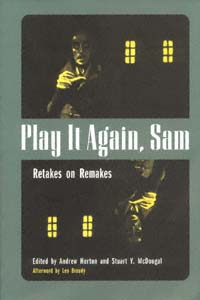 | Title: Play it again, Sam: retakes on remakes Author: Horton, Andrew Published: University of California Press, 1998 Subjects: Cinema and Performance Arts | Film Publisher's Description: Play It Again, Sam is a timely investigation of a topic that until now has received almost no critical attention in film and cultural studies: the cinematic remake. As cinema enters its second century, more remakes are appearing than ever before, and these writers consider the full range: Hollywood films that have been recycled by Hollywood, such as The Jazz Singer, Cape Fear , and Robin Hood ; foreign films including Breathless ; and Three Men and a Baby , which Hollywood has reworked for American audiences; and foreign films based on American works, among them Yugoslav director Emir Kusturica's Time of the Gypsies , which is a "makeover" of Coppola's Godfather films. As these essays demonstrate, films are remade by other films (Alfred Hitchcock went so far as to remake his own The Man Who Knew Too Much ) and by other media as well.The editors and contributors draw upon narrative, film, and cultural theories, and consider gender, genre, and psychological issues, presenting the "remake" as a special artistic form of repetition with a difference and as a commercial product aimed at profits in the marketplace. The remake flourishes at the crossroads of the old and the new, the known and the unknown. Play It Again, Sam takes the reader on an eye-opening tour of this hitherto unexplored territory. [brief] Similar Items |
| 4. | 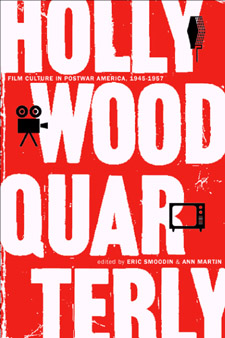 | Title: Hollywood quarterly: film culture in postwar America, 1945-1957 Author: Smoodin, Eric Loren Published: University of California Press, 2002 Subjects: Cinema and Performance Arts Publisher's Description: The first issue of Hollywood Quarterly, in October 1945, marked the appearance of the most significant, successful, and regularly published journal of its kind in the United States. For its entire life, the Quarterly held to the leftist utopianism of its founders, several of whom would later be blacklisted. The journal attracted a collection of writers unmatched in North American film studies for the heterogeneity of their intellectual and practical concerns: from film, radio, and television industry workers to academics; from Sam Goldwyn, Edith Head, and Chuck Jones to Theodor Adorno and Siegfried Kracauer. For this volume, Eric Smoodin and Ann Martin have selected essays that reflect the astonishing eclecticism of the journal, with sections on animation, the avant-garde, and documentary to go along with a representative sampling of articles about feature-length narrative films. They have also included articles on radio and television, reflecting the contents of just about every issue of the journal and exemplifying the extraordinary moment in film and media studies that Hollywood Quarterly captured and helped to create. In 1951, Hollywood Quarterly was renamed the Quarterly of Film, Radio, and Television, and in 1958 it was replaced by Film Quarterly, which is still published by the University of California Press. During those first twelve years, the Quarterly maintained an intelligent, sophisticated, and critical interest in all the major entertainment media, not just film, and in issue after issue insisted on the importance of both aesthetic and sociological methodologies for studying popular culture, and on the political significance of the mass media. [brief] Similar Items |
| 5. | 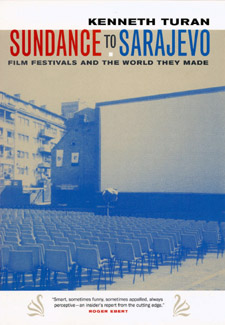 | Title: Sundance to Sarajevo: film festivals and the world they made Author: Turan, Kenneth Published: University of California Press, 2002 Subjects: Cinema and Performance Arts | Film Publisher's Description: Almost every day of the year a film festival takes place somewhere in the world--from sub-Saharan Africa to the Land of the Midnight Sun. Sundance to Sarajevo is a tour of the world's film festivals by an insider whose familiarity with the personalities, places, and culture surrounding the cinema makes him uniquely suited to his role. Kenneth Turan, film critic for the Los Angeles Times, writes about the most unusual as well as the most important film festivals, and the cities in which they occur, with an eye toward the larger picture. His lively narrative emphasizes the cultural, political, and sociological aspects of each event as well as the human stories that influence the various and telling ways the film world and the real world intersect. Of the festivals profiled in detail, Cannes and Sundance are obvious choices as the biggest, brashest, and most influential of the bunch. The others were selected for their ability to open a window onto a wider, more diverse world and cinema's place in it. Sometimes, as with Sarajevo and Havana, film is a vehicle for understanding the international political community's most vexing dilemmas. Sometimes, as with Burkina Faso's FESPACO and Pordenone's Giornate del Cinema Muto, it's a chance to examine the very nature of the cinematic experience. But always the stories in this book show us that film means more and touches deeper chords than anyone might have expected. No other book explores so many different festivals in such detail or provides a context beyond the merely cinematic. [brief] Similar Items |
| 6. | 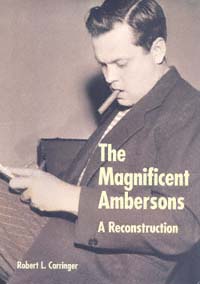 | Title: The Magnificent Ambersons: a reconstruction Author: Carringer, Robert L Published: University of California Press, 1993 Subjects: Cinema and Performance Arts | Film Publisher's Description: Orson Welles considered The Magnificent Ambersons the crucial turning point in his career. He said, " They destroyed Ambersons and it destroyed me." In 1942, while Welles was away, RKO Studios drastically recut the completed film. None of that deleted footage is known to survive.Now film scholar Robert Carringer has reconstructed Welles's own version of Ambersons , using all available surviving evidence including rare studio documents and the recollections of Welles himself and other original participants in the film.Carringer reaches startling conclusions about where the responsibility for the film's undoing ultimately lies. His spellbinding - and no doubt controversial - book will be eagerly welcomed by film historians and enthusiasts. [brief] Similar Items |
| 7. | 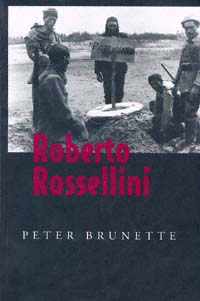 | Title: Roberto Rossellini Author: Brunette, Peter Published: University of California Press, 1996 Subjects: Cinema and Performance Arts Publisher's Description: This is the first full-length study in any language of the most significant film director of Italian Neorealism. Peter Brunette combines close analyses of Roberto Rossellini's formal and narrative style with a thorough account of his position in the political and cultural landscape of postwar Italy. More than forty films are explored, including Open City, Paisan, Voyage to Italy, The Rise to Power of Louis XIV, and films made in the director's later years that documented crucial epochs in human history. Brunette's book is based on eight years of research, during which he interviewed members of the director's family as well as Rossellini himself. Brunette also draws on an enormous body of European and American criticism and discusses the various intellectual debates spawned by the director's work. This landmark study is both a comprehensive introduction to one of the most influential practitioners of the contemporary cinema and a boldly original discussion of Italian Neorealism. [brief] Similar Items |
| 8. | 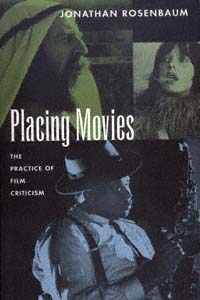 | Title: Placing movies: the practice of film criticism Author: Rosenbaum, Jonathan Published: University of California Press, 1995 Subjects: Cinema and Performance Arts | Film Publisher's Description: Jonathan Rosenbaum, longtime contributor to such publications as Film Quarterly, Sight and Sound, and The Village Voice , is arguably the most eloquent, insightful film critic writing in America today. Placing Movies , the first collection of his work, gathers together thirty of his most distinctive and illuminating pieces. Written over a span of twenty-one years, these essays cover an extraordinarily broad range of films - from Hollywood blockbusters to foreign art movies to experimental cinema. They include not just reviews but perceptive commentary on directors, actors, and trends; and thoughtful analysis of the practice of film criticism.It is this last element - Rosenbaum's reflections on the art of film criticism - that sets this collection apart from other volumes of film writing. Both in the essays themselves and in the section introductions, Rosenbaum provides a rare insider's view of his profession: the backstage politics, the formulation of critical judgments, the function of film commentary. Taken together, these pieces serve as a guided tour of the profession of film criticism.They also serve as representative samples of Rosenbaum's unique brand of film writing. Among the highlights are memoirs of director Jacques Tati and maverick critic Manny Farber, celebrations of classics such as Gentlemen Prefer Blondes and The Manchurian Candidate , and considered reevaluations of Orson Welles and Woody Allen. [brief] Similar Items |
| 9. | 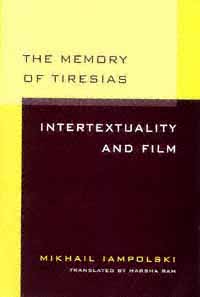 | Title: The memory of Tiresias: intertextuality and film Author: I︠A︡mpolʹskiĭ, M. B Published: University of California Press, 1998 Subjects: Cinema and Performance Arts | Literature | Popular Culture Publisher's Description: The concept of intertextuality has proven of inestimable value in recent attempts to understand the nature of literature and its relation to other systems of cultural meaning. In The Memory of Tiresias , Mikhail Iamposlki presents the first sustained attempt to develop a theory of cinematic intertextuality.Building on the insights of semiotics and contemporary film theory, Iampolski defines cinema as a chain of transparent, mimetic fragments intermixed with quotations he calls "textual anomalies." These challenge the normalization of meaning and seek to open reading out onto the unlimited field of cultural history, which is understood in texts as a semiotically active extract, already inscribed.Quotations obstruct mimesis and are consequently transformed in the process of semiosis, an operation that Iampolski defines as reading in an aura of enigma. In a series of brilliant analyses of films by D.W. Griffith, Sergei Eisenstein, and Luis Buñuel, he presents different strategies of intertextual reading in their work. His book suggests the continuing centrality of semiotic analysis and is certain to interest film historians and theorists, as well as readers in cultural and literary studies. [brief] Similar Items |
| 10. | 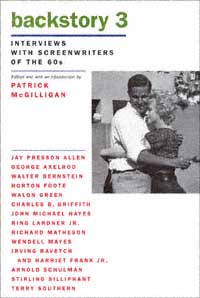 | Title: Backstory 3: interviews with screenwriters of the 1960s Author: McGilligan, Patrick Published: University of California Press, 1997 Subjects: Cinema and Performance Arts | Film | Writing Publisher's Description: The Backstory series of unique "oral histories" chronicles the lives and careers of notable Hollywood screenwriters - in their own words. Backstory: Interviews with Screenwriters of Hollywood's Golden Age focused on the early sound era and the 1930s. Backstory 2 featured Interviews with Screenwriters of the 1940s and 1950s. Backstory 3 takes up the history of American screenwriting in the 1960s, through the experiences of fourteen key scenarists. These lively interviews, conducted by Pat McGilligan and others, feature Jay Presson Allen, George Axelrod, Walter Bernstein, Horton Foote, Walon Green, Charles B. Griffith, John Michael Hayes, Ring Lardner Jr., Wendell Mayes, Irving Ravetch and Harriet Frank Jr., Arnold Schulman, Stirling Silliphant, and Terry Southern.The series has proven useful and edifying for film students, scholars, and historians, for screenwriters and other professionals, and for film buffs in general. Applauded by reviewers and named among the "100 essential film books" by a Los Angeles Times -appointed panel, it is cited often and quoted in many film histories. [brief] Similar Items |
| 11. | 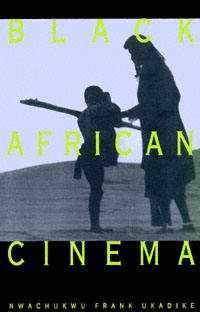 | Title: Black African cinema Author: Ukadike, Nwachukwu Frank Published: University of California Press, 1994 Subjects: Cinema and Performance Arts | Film Publisher's Description: From the proselytizing lantern slides of early Christian missionaries to contemporary films that look at Africa through an African lens, N. Frank Ukadike explores the development of black African cinema. He examines the impact of culture and history, and of technology and co-production, on filmmaking throughout Africa.Every aspect of African contact with and contribution to cinematic practices receives attention: British colonial cinema; the thematic and stylistic diversity of the pioneering "francophone" films; the effects of television on the motion picture industry; and patterns of television documentary filmmaking in "anglophone" regions. Ukadike gives special attention to the growth of independent production in Ghana and Nigeria, the unique Yoruba theater-film tradition, and the militant liberationist tendencies of "lusophone" filmmakers. He offers a lucid discussion of oral tradition as a creative matrix and the relationship between cinema and other forms of popular culture. And, by contrasting "new" African films with those based on the traditional paradigm, he explores the trends emerging from the eighties and nineties.Clearly written and accessible to specialist and general reader alike, Black African Cinema 's analysis of key films and issues - the most comprehensive in English - is unique. The book's pan-Africanist vision heralds important new strategies for appraising a cinema that increasingly attracts the attention of film students and Africanists. [brief] Similar Items |
| 12. | 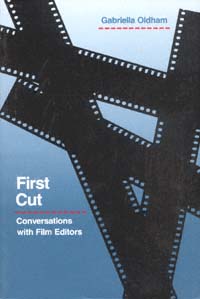 | Title: First cut: conversations with film editors Author: Oldham, Gabriella Published: University of California Press, 1992 Subjects: Cinema and Performance Arts | Film | Media Studies Publisher's Description: First Cut offers an opportunity to learn what film editing really is, and to learn from the source. Gabriella Oldham's interviews with twenty-three award-winning film editors give a full picture of the complex art and craft of editing a film. Filled with animated anecdotes and detailed examples, thi . . . [more] Similar Items |
| 13. | 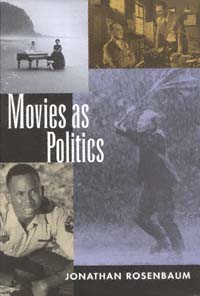 | Title: Movies as politics Author: Rosenbaum, Jonathan Published: University of California Press, 1997 Subjects: Cinema and Performance Arts | Film | American Studies | Gender Studies Publisher's Description: In this new collection of reviews and essays, Jonathan Rosenbaum focuses on the political and social dynamics of the contemporary movie scene. Rosenbaum, widely regarded as the most gifted contemporary American commentator on the cinema, explores the many links between film and our ideological identities as individuals and as a society. Readers will find revealing examinations of, for example, racial stereotyping in the debates surrounding Do the Right Thing , key films from Africa, China, Japan, and Taiwan, Hollywood musicals and French serials, and the cultural amnesia accompanying cinematic treatments of the Russian Revolution, the civil rights movement, and the Vietnam War. From Schindler's List, Star Wars, Pulp Fiction, Forrest Gump, The Piano , and Ace Ventura: Pet Detective to the maverick careers of Orson Welles, Jacques Tati, Nicholas Ray, Chantal Akerman, Todd Haynes, and Andrei Tarkovsky, Rosenbaum offers a polemically pointed survey that makes clear the high stakes involved in every aspect of filmmaking and filmgoing. [brief] Similar Items |
| 14. |  | Title: Comedy/cinema/theory Author: Horton, Andrew Published: University of California Press, 1991 Subjects: Cinema and Performance Arts | Film Publisher's Description: The nature of comedy has interested many thinkers, from Plato to Freud, but film comedy has not received much theoretical attention in recent years. The essays in Comedy/Cinema/Theory use a range of critical and theoretical approaches to explore this curious and fascinating subject. The result is a stimulating, informative book for anyone interested in film, humor, and the art of bringing the two together.Comedy remains a central human preoccupation, despite the vagaries in form that it has assumed over the centuries in different media. In his introduction, Horton surveys the history of the study of comedy, from Aristophanes to the present, and he also offers a perspective on other related comic forms: printed fiction, comic books, TV sitcoms, jokes and gags.Some essays in the collection focus on general issues concerning comedy and cinema. In lively (and often humorous) prose, such scholars as Lucy Fischer, Noel Carroll, Peter Lehman, and Brian Henderson employ feminist, post-Freudian, neo-Marxist, and Bakhtinian methodologies. The remaining essays bring theoretical considerations to bear on specific works and comic filmmakers. Peter Brunette, William Paul, Scott Bukatman, Dana Polan, Charles Eidsvik, Ruth Perlmutter, Stephen Mamber, and Andrew Horton provide different perspectives for analyzing The Three Stooges, Chaplin, Jerry Lewis, Woody Allen, Dusan Makavejev, and Alfred Hitchcock's sole comedy, Mr. and Mrs. Smith , as well as the peculiar genre of cynical humor from Eastern Europe.As editor Horton notes, an over-arching theory of film comedy does not emanate from these essays. Yet the diversity and originality of the contributions reflect vital and growing interest in the subject, and both students of film and general moviegoers will relish the results. [brief] Similar Items |
| 15. | 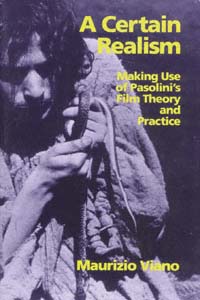 | Title: A certain realism: making use of Pasolini's film theory and practice Author: Viano, Maurizio Sanzio 1950- Published: University of California Press, 1993 Subjects: Cinema and Performance Arts | Film Publisher's Description: Pier Paolo Pasolini (1922-1975) was arguably the most complex director of postwar Italian cinema. His films - Accattone , The Canterbury Tales , Medea , Saló - continue to challenge and entertain new generations of moviegoers. A leftist, a homosexual, and a distinguished writer of fiction, poetry, and criticism, Pasolini once claimed that "a certain realism" informed his filmmaking.Masterfully combining analyses of Pasolini's literary and theoretical writings and of all his films, Maurizio Viano offers the first thorough study of Pasolini's cinematic realism, in theory and in practice. He finds that Pasolini's cinematic career exemplifies an "expressionistic realism" that acknowledges its subjective foundation instead of striving for an impossible objectivity.Focusing on the personal and expressionistic dimensions of Pasolini's cinema, Viano also argues that homosexuality is present in the films in ways that critics have thus far failed to acknowledge. Sure to generate controversy among film scholars, Italianists, and fans of the director's work, this accessible film-by-film treatment is an ideal companion for anyone watching Pasolini's films on video. [brief] Similar Items |
| 16. | 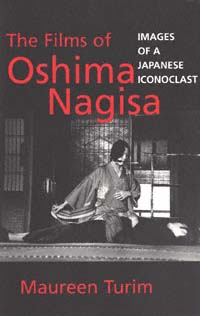 | Title: The films of Oshima Nagisa: images of a Japanese iconoclast Author: Turim, Maureen Cheryn 1951- Published: University of California Press, 1998 Subjects: Cinema and Performance Arts | Film | Japan Publisher's Description: This study of the films of Oshima Nagisa is both an essential introduction to the work of a major postwar director of Japanese cinema and a theoretical exploration of strategies of filmic style. For almost forty years, Oshima has produced provocative films that have received wide distribution and international acclaim. Formally innovative as well as socially daring, they provide a running commentary, direct and indirect, on the cultural and political tensions of postwar Japan. Best known today for his controversial films In the Realm of the Senses and The Empire of Passion , Oshima engages issues of sexuality and power, domination and identity, which Maureen Turim explores in relation to psychoanalytic and postmodern theory. The films' complex representation of women in Japanese society receives detailed and careful scrutiny, as does their political engagement with the Japanese student movement, postwar anti-American sentiments, and critiques of Stalinist tendencies of the Left. Turim also considers Oshima's surprising comedies, his experimentation with Brechtian and avant-garde theatricality as well as reflexive textuality, and his essayist documentaries in this look at an artist's gifted and vital attempt to put his will on film. [brief] Similar Items |
| 17. | 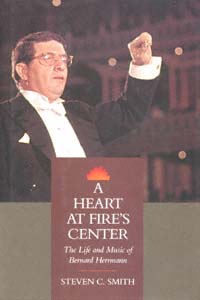 | Title: A heart at fire's center: the life and music of Bernard Herrmann Author: Smith, Steven C Published: University of California Press, 1991 Subjects: Cinema and Performance Arts | Film | Contemporary Music | Composers Publisher's Description: No composer contributed more to film than Bernard Herrmann, who in over 40 scores enriched the work of such directors as Orson Welles, Alfred Hitchcock, François Truffaut, and Martin Scorsese. In this first major biography of the composer, Steven C. Smith explores the interrelationships between Herrmann's music and his turbulent personal life, using much previously unpublished information to illustrate Herrmann's often outrageous behavior, his working methods, and why his music has had such lasting impact.From his first film ( Citizen Kane ) to his last ( Taxi Driver ), Herrmann was a master of evoking psychological nuance and dramatic tension through music, often using unheard-of instrumental combinations to suit the dramatic needs of a film. His scores are among the most distinguished ever written, ranging from the fantastic ( Fahrenheit 451 , The Day the Earth Stood Still ) to the romantic ( Obsession , The Ghost and Mrs. Muir ) to the terrifying ( Psycho ).Film was not the only medium in which Herrmann made a powerful mark. His radio broadcasts included Orson Welles's Mercury Theatre of the Air and The War of the Worlds . His concert music was commissioned and performed by the New York Philharmonic, and he was chief conductor of the CBS Symphony.Almost as celebrated as these achievements are the enduring legends of Herrmann's combativeness and volatility. Smith separates myth from fact and draws upon heretofore unpublished material to illuminate Herrmann's life and influence. Herrmann remains as complex as any character in the films he scored - a creative genius, an indefatigable musicologist, an explosive bully, a generous and compassionate man who desperately sought friendship and love. [brief] Similar Items |
| 18. | 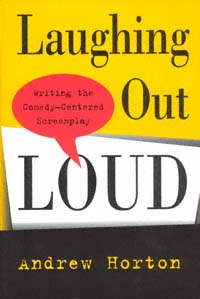 | Title: Laughing out loud: writing the comedy-centered screenplay Author: Horton, Andrew Published: University of California Press, 2000 Subjects: Cinema and Performance Arts | Film | Writing Publisher's Description: Whoever wrote "Make 'em laugh!" knew that it's easier said than done. But people love to laugh, and good comedy will always sell. With the help of this complete and entertaining guide, writers and would-be writers for film and television can look forward to writing comedy that goes far beyond stereotypic jokes and characters. In Laughing Out Loud , award-winning screenwriter and author Andrew Horton blends history, theory, and analysis of comedy with invaluable advice.Using examples from Chaplin to Seinfeld, Aristophanes to Woody Allen, Horton describes comedy as a perspective rather than merely as a genre and then goes on to identify the essential elements of comedy. His lively overview of comedy's history traces its two main branches - anarchistic comedy and romantic comedy - from ancient Greece through contemporary Hollywood, by way of commedia dell'arte, vaudeville, and silent movies. Television and international cinema are included in Horton's analysis, which leads into an up-close review of the comedy chemistry in a number of specific films and television shows.The rest of the book is a practical guide to writing feature comedy and episodic TV comedy, complete with schedules and exercises designed to unblock any writer's comic potential. The appendices offer tips on networking, marketing, and even producing comedies, and are followed by a list of recommended comedies and a bibliography. [brief] Similar Items |
| 19. | 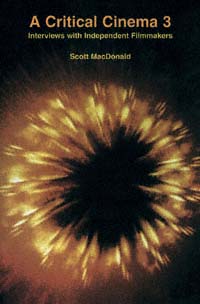 | Title: A critical cinema 3: interviews with independent filmmakers Author: MacDonald, Scott 1942- Published: University of California Press, 1998 Subjects: Cinema and Performance Arts | Film Publisher's Description: A Critical Cinema 3 continues Scott MacDonald's compilation of personal interviews and public discussions with major contributors to independent filmmaking and film awareness. An informative exchange with Amos Vogel, whose Cinema 16 Society drew American filmgoers into a broader sense of film history, is followed by interviews reflecting a wide range of approaches to filmmaking. Sally Potter discusses her popular feature, Orlando , in relation to the experimental work that preceded it, and Canadian independent John Porter argues compellingly for small-gauge, Super-8mm filmmaking. Ken Jacobs discusses the "Nervous System" apparatus with which he transforms old film footage into new forms of motion picture art; Jordan Belson describes his Vortex Concerts, ancestors of modern laser light shows; and Elias Merhige talks about going beneath the "rational structure of meaning" in Begotten . A Critical Cinema 3 presents independent cinema as an international and multiethnic phenomenon. MacDonald interviews filmmakers from Sweden, France, Italy, Austria, Armenia, India, the Philippines, and Japan and examines the work of African Americans, European Americans, Asian Americans, and Hispanics. He provides an introductory overview of each interviewee, as well as detailed film/videographies and selected bibliographies. With its predecessors, A Critical Cinema (California, 1988) and A Critical Cinema 2 (California, 1992), this is the most extensive, in-depth exploration of independent cinema available in English. [brief] Similar Items |
| 20. | 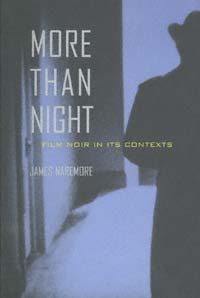 | Title: More than night: film noir in its contexts Author: Naremore, James Published: University of California Press, 1998 Subjects: Cinema and Performance Arts | Film | Literature Publisher's Description: "Film noir" evokes memories of stylish, cynical, black-and-white movies from the 1940s and 1950s - melodramas about private eyes, femmes fatales, criminal gangs, and lovers on the run. In More Than Night , James Naremore discusses these pictures, but he also shows that the central term is more complex and paradoxical than we realize. Film noir refers both to an important cinematic legacy and to an idea we have projected onto the past.This lively, wide-ranging cultural history offers an original approach to the subject, as well as new production information and fresh commentary on scores of films, including such classics as Double Indemnity , The Third Man , and Out of the Past , and such "neo noirs" as Chinatown , Pulp Fiction , and Devil in a Blue Dress . Naremore discusses film noir as a term in criticism; as an expression of artistic modernism; as a symptom of Hollywood censorship and politics in the 1940s; as a market strategy; as an evolving style; as a cinema about races and nationalities; and as an idea that circulates across all the information technologies. Interdisciplinary in approach, this book has valuable things to say not only about film and television, but also about modern literature, the fine arts, and popular culture in general. In a field where much of what has been published is superficial and derivative, Naremore's work is certain to be received as a definitive treatment. [brief] Similar Items |